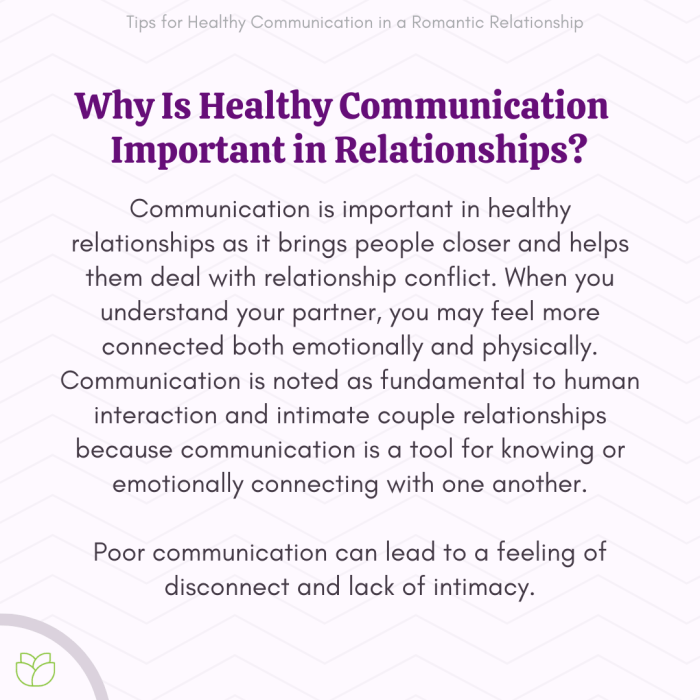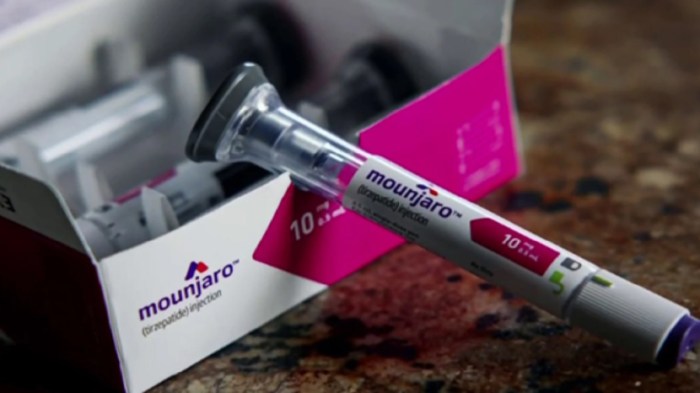Why do I keep getting sick? This persistent illness can be frustrating, and understanding the underlying causes is key to regaining your well-being. This post delves into potential reasons, from lifestyle choices to underlying health conditions, environmental factors, and nutritional deficiencies. We’ll explore how each element impacts your immune system, offering insights and solutions for a healthier you.
The path to understanding your frequent illnesses often involves a multifaceted approach. From checking for potential underlying conditions to assessing lifestyle habits and stress levels, a thorough evaluation is needed. This post aims to help you uncover the root causes and empowers you to take proactive steps toward better health.
Underlying Health Conditions
Frequent illness can sometimes be a symptom of an underlying health condition, rather than simply a consequence of lifestyle or environmental factors. Understanding potential medical issues can lead to earlier diagnosis and appropriate treatment, improving overall well-being. Identifying these conditions requires a careful evaluation by a healthcare professional.Many conditions can cause frequent infections or illness symptoms that mimic the common cold or flu.
These conditions often involve weakened immune systems or chronic inflammation, making individuals more susceptible to various pathogens. A thorough medical evaluation is crucial to determine the root cause of persistent illness.
Potential Underlying Health Conditions
A range of underlying health conditions can contribute to frequent illness. These conditions may affect the immune system’s ability to fight off infections or cause chronic inflammation, making individuals more vulnerable to pathogens.
- Chronic Fatigue Syndrome (CFS): CFS is characterized by persistent fatigue, often accompanied by other symptoms such as muscle pain, headaches, and cognitive difficulties. These symptoms can easily mimic frequent illnesses, making diagnosis challenging. The exact cause of CFS remains unknown, but it’s believed to involve a combination of genetic and environmental factors.
- Autoimmune Diseases: Autoimmune diseases, such as lupus or rheumatoid arthritis, involve the immune system mistakenly attacking the body’s own tissues. This chronic inflammation can lead to frequent infections and fatigue. Symptoms can vary widely, but fever, joint pain, and skin rashes are common indicators.
- Hypothyroidism: Hypothyroidism, a condition where the thyroid gland doesn’t produce enough hormones, can lead to a weakened immune response. Symptoms often include fatigue, weakness, and increased susceptibility to infections. These symptoms can be subtle and easily overlooked, leading to misdiagnosis.
- Vitamin Deficiencies: Certain vitamin deficiencies, particularly vitamin D, can impact the immune system’s function. Low vitamin D levels have been linked to increased susceptibility to infections. Other deficiencies, such as vitamin C or zinc, also contribute to compromised immunity. Diet and supplementation can play a significant role in correcting these deficiencies.
- Weakened Immune System (e.g., HIV/AIDS): Conditions that weaken the immune system, such as HIV/AIDS, make individuals more susceptible to opportunistic infections. This can result in frequent illnesses that are unusual or severe.
Comparing Symptoms and Potential Causes
The following table provides a comparison of symptoms, potential causes, and further information regarding potential underlying health conditions that may contribute to frequent illness.
| Condition | Symptoms | Potential Causes | Further Information |
|---|---|---|---|
| Chronic Fatigue Syndrome (CFS) | Persistent fatigue, muscle pain, headaches, cognitive difficulties, sleep disturbances, tender lymph nodes | Unknown, likely a combination of genetic and environmental factors | Diagnosis often involves ruling out other conditions with similar symptoms. Treatment focuses on symptom management. |
| Autoimmune Diseases (e.g., Lupus, Rheumatoid Arthritis) | Joint pain, swelling, fever, fatigue, skin rashes, organ inflammation, hair loss | Genetic predisposition, environmental triggers, and immune system dysfunction | Diagnosis typically involves blood tests, imaging scans, and physical examination. Treatment focuses on managing symptoms and slowing disease progression. |
| Hypothyroidism | Fatigue, weakness, cold intolerance, weight gain, constipation, dry skin, hair loss, slow heart rate | Insufficient production of thyroid hormones | Diagnosis involves blood tests to measure thyroid hormone levels. Treatment typically involves hormone replacement therapy. |
| Vitamin Deficiencies (e.g., Vitamin D, C, Zinc) | Fatigue, weakness, frequent infections, slow wound healing, bone pain, muscle cramps | Inadequate intake of essential vitamins from diet or poor absorption | Diagnosis involves blood tests to assess vitamin levels. Treatment may include dietary changes and/or supplements. |
| Weakened Immune System (e.g., HIV/AIDS) | Frequent, severe, or unusual infections, fever, weight loss, fatigue, swollen lymph nodes | Infections or conditions that damage the immune system | Diagnosis involves blood tests and other assessments to identify the specific condition. Treatment focuses on managing the underlying condition and preventing infections. |
Lifestyle Factors

Beyond underlying health conditions, our daily choices significantly impact our immune system’s ability to fight off illnesses. Poor lifestyle habits can weaken the body’s defenses, making us more susceptible to infections. Conversely, adopting healthy habits can strengthen our immune response and improve overall well-being. Understanding these factors is crucial for taking proactive steps towards a healthier, more resilient immune system.
Nutrition
A balanced diet is paramount for immune function. Essential nutrients, such as vitamins, minerals, and antioxidants, are crucial for supporting immune cell activity. A diet lacking in these vital components can impair the immune system’s ability to respond effectively to pathogens. Insufficient intake of fruits, vegetables, and lean proteins can contribute to immune deficiency, increasing the risk of illness.
Conversely, a diet rich in fruits, vegetables, and whole grains provides the necessary nutrients for a robust immune response. Proper hydration is also essential for transporting immune cells and nutrients throughout the body.
Sleep
Adequate sleep is critical for immune system function. During sleep, the body repairs and regenerates, including immune cells. Chronic sleep deprivation weakens the immune system, making individuals more vulnerable to infections. Research consistently demonstrates a link between insufficient sleep and increased susceptibility to illnesses. Aiming for 7-9 hours of quality sleep each night is crucial for maintaining a healthy immune response.
Stress Management
Chronic stress negatively impacts immune function. Stress hormones, like cortisol, can suppress the activity of immune cells, making the body less capable of fighting off infections. Prolonged stress can lead to a weakened immune system, increasing susceptibility to illness. Conversely, managing stress effectively through techniques like exercise, meditation, or spending time in nature can support a healthy immune response.
Finding healthy ways to cope with stress is essential for maintaining a strong immune system.
Exercise
Regular physical activity is vital for immune function. Exercise helps improve blood circulation, delivering essential nutrients and immune cells to tissues throughout the body. Moderate-intensity exercise, such as brisk walking or cycling, can boost immune function. Conversely, a sedentary lifestyle can impair immune response, making individuals more susceptible to infections. Incorporating regular exercise into daily routines strengthens the immune system and contributes to overall health.
I’ve been feeling under the weather lately, and I’m starting to wonder why I keep getting sick. Could it be stress? Maybe I’m not taking care of myself as well as I should. Recent research suggests that underlying issues like narcissistic personality disorder (NPD) might play a role in overall health. Understanding NPD traits, causes, and potential treatments could offer valuable insight ( narcissistic personality disorder npd traits causes treatment ).
Perhaps examining my coping mechanisms and emotional well-being will help me figure out why I keep getting sick.
Smoking and Alcohol Consumption
Smoking and excessive alcohol consumption are detrimental to immune function. Smoking damages the respiratory system, reducing the body’s ability to fight off infections. Alcohol impairs the function of immune cells, hindering the body’s ability to respond to pathogens. These detrimental habits compromise the immune system, making individuals more prone to various illnesses. Conversely, avoiding smoking and limiting alcohol intake are essential for maintaining a healthy immune response.
Healthy vs. Unhealthy Lifestyle Choices
| Lifestyle Choice | Impact on Immune System | Healthy/Unhealthy | Explanation |
|---|---|---|---|
| Balanced Diet | Supports immune cell activity | Healthy | Provides essential nutrients for a robust immune response. |
| Chronic Sleep Deprivation | Weakens immune system, increases vulnerability to infections | Unhealthy | Disrupts immune cell regeneration and function. |
| Chronic Stress | Suppresses immune cell activity, increasing susceptibility to illness | Unhealthy | Elevated stress hormones impair immune response. |
| Regular Exercise | Improves blood circulation, boosting immune function | Healthy | Delivers nutrients and immune cells to tissues effectively. |
| Smoking | Damages respiratory system, reduces infection-fighting ability | Unhealthy | Compromises the body’s defense mechanisms. |
| Excessive Alcohol Consumption | Impairs immune cell function, hinders pathogen response | Unhealthy | Disrupts immune system’s ability to combat infections. |
Nutritional Deficiencies
A crucial aspect of maintaining a robust immune system is ensuring adequate intake of essential nutrients. Nutritional deficiencies can significantly compromise the body’s ability to fight off infections and illnesses. Understanding which nutrients are vital for immune function and how deficiencies manifest is key to preventative health.
Common Nutritional Deficiencies and Their Impact
Several vitamins and minerals are essential for the proper functioning of immune cells. Deficiencies in these crucial nutrients can lead to a weakened immune response, making individuals more susceptible to infections. Common deficiencies include vitamin C, zinc, vitamin D, and various B vitamins.
Foods Rich in Immune-Boosting Nutrients
A balanced diet rich in fruits, vegetables, lean proteins, and whole grains provides the necessary nutrients for a strong immune system. Including a variety of colorful fruits and vegetables is particularly important as they offer a wide range of vitamins and minerals. Lean proteins are crucial for building and repairing tissues, while whole grains provide complex carbohydrates for sustained energy.
I’ve been feeling under the weather lately, and I’m starting to wonder why I keep getting sick. Could it be my diet? Recent research into the Bernstein Diabetes Diet, a low-carbohydrate approach, bernsteins diabetes diet overview , suggests a connection between blood sugar control and immunity. Maybe tweaking my eating habits could be the key to fighting off these pesky colds and flus.
It’s worth looking into!
Potential Nutrient Deficiencies and Symptoms
Recognizing the symptoms of nutritional deficiencies can help individuals address potential issues early. Symptoms can vary depending on the specific nutrient deficiency, but common indicators include fatigue, frequent infections, slow wound healing, and weakened immune response.
| Nutrient | Deficiency Symptoms | Food Sources | Impact on Immune Function |
|---|---|---|---|
| Vitamin C | Fatigue, frequent colds, bleeding gums, impaired wound healing | Citrus fruits, berries, peppers, broccoli | Crucial for collagen production, supporting immune cell function. |
| Zinc | Impaired wound healing, loss of appetite, slow growth, delayed sexual maturation, impaired immune response | Oysters, beef, poultry, beans, nuts | Essential for immune cell development and function. |
| Vitamin D | Muscle weakness, bone pain, increased risk of infections | Fatty fish (salmon, tuna), egg yolks, fortified foods | Plays a role in regulating immune cell activity and preventing infections. |
| Iron | Fatigue, weakness, shortness of breath, pale skin | Red meat, poultry, beans, spinach | Important for oxygen transport to immune cells, and crucial for immune function. |
| B Vitamins (e.g., B6, B12) | Fatigue, anemia, neurological problems | Meat, poultry, fish, eggs, leafy green vegetables | Support the production of immune cells and their function. |
Environmental Factors
Environmental factors play a significant role in influencing our susceptibility to illness. Beyond the obvious dangers of pathogens, our surroundings can directly impact our immune system’s ability to fight off infection. This influence extends from the air we breathe to the stress levels we experience, highlighting the interconnectedness of our health and our environment.Our immune system is constantly adapting to the environment.
Exposure to pollutants, chronic stress, and insufficient sleep can disrupt this delicate balance, leaving us more vulnerable to illness. Understanding these environmental stressors and their effects is crucial in developing strategies to boost our immune defenses and maintain optimal health.
Pollution’s Impact on Immune Function
Air pollution, a pervasive environmental concern, is directly linked to a weakened immune response. Particulate matter and other pollutants can trigger inflammatory responses in the body, which, if chronic, can compromise the effectiveness of the immune system. Studies have shown a correlation between exposure to high levels of air pollution and an increased risk of respiratory infections and other illnesses.
This is particularly concerning for vulnerable populations, such as children and the elderly.
Stress and the Immune System
Chronic stress, whether stemming from work, relationships, or other life pressures, has a profound impact on the immune system. The body’s response to stress involves the release of hormones like cortisol, which can suppress the activity of immune cells. This suppression can lead to a decreased ability to fight off infections and heal wounds. Prolonged periods of stress can make individuals more susceptible to a range of illnesses, including colds, flu, and even more serious conditions.
Sleep Deprivation and Immune Response
Adequate sleep is essential for a healthy immune system. During sleep, the body repairs and strengthens its defenses. Chronic sleep deprivation disrupts this process, reducing the production of immune cells and impairing their function. This makes individuals more susceptible to infections and slower to recover from illness. The importance of getting enough sleep cannot be overstated in maintaining a robust immune response.
Environmental Stressors and Their Effects
Numerous environmental factors can negatively impact the immune system. Exposure to certain chemicals, heavy metals, and toxins can suppress immune function. Furthermore, noise pollution and electromagnetic fields have been linked to stress responses that can compromise the immune system’s effectiveness. These factors, when combined, can create a complex web of negative influences on our health.
- Exposure to mold and mildew can trigger allergic reactions and weaken the immune system. This can lead to respiratory issues, skin problems, and a higher susceptibility to infections.
- Extreme temperatures, both heat and cold, can put a strain on the body, potentially suppressing immune function. This effect is amplified in vulnerable populations.
- Noise pollution can trigger stress responses, leading to the release of stress hormones, which in turn can weaken the immune system.
Table: Environmental Factors and Risk of Illness
| Environmental Factor | Impact on Immune System | Mitigation Strategies | Explanation |
|---|---|---|---|
| Air pollution (e.g., particulate matter) | Triggers inflammation, reduces immune cell activity | Improving air quality, using air purifiers, limiting outdoor time during high-pollution periods. | Exposure to high levels of air pollution has been linked to increased respiratory infections and other illnesses. |
| Chronic stress | Suppresses immune cell activity, reduces ability to fight infection | Stress management techniques (yoga, meditation, mindfulness), time management, seeking support. | Prolonged stress can make individuals more susceptible to a variety of illnesses. |
| Sleep deprivation | Reduces immune cell production, impairs immune function | Establishing a regular sleep schedule, creating a relaxing bedtime routine, addressing underlying sleep disorders. | Chronic sleep deprivation compromises the body’s ability to repair and strengthen its immune defenses. |
| Exposure to mold/mildew | Triggers allergic reactions, weakens immune system | Identifying and removing sources of mold/mildew, improving ventilation. | Exposure to mold can lead to respiratory issues and other health problems. |
Hygiene Practices: Why Do I Keep Getting Sick
Maintaining good hygiene is a cornerstone of preventing illness. Consistent adherence to these practices significantly reduces the risk of infection and promotes overall well-being. Simple, everyday actions can dramatically impact your health. The chain of infection is broken when proper hygiene is implemented.Understanding how hygiene impacts the spread of germs is crucial. Germs, including bacteria and viruses, can be easily transmitted through direct contact, contaminated surfaces, or airborne particles.
Proper handwashing, along with other hygienic practices, plays a critical role in interrupting this transmission. By reducing the number of germs present, we significantly lower the likelihood of contracting an infection.
Handwashing Effectiveness
Thorough handwashing is arguably the most effective preventive measure against the spread of many illnesses. Frequent and proper handwashing significantly reduces the transmission of pathogens. Soap and water are the most effective means for removing germs from hands, particularly when visibly soiled. Washing hands with soap and water for at least 20 seconds is essential. This allows for sufficient contact time to dislodge and remove germs from the skin.
Using antimicrobial soaps can offer some additional benefit but may not be significantly more effective than regular soap.
Other Preventive Measures
Beyond handwashing, other hygienic practices contribute to disease prevention. These practices are critical in minimizing the risk of infection. Proper food handling techniques, such as avoiding cross-contamination and maintaining safe temperatures, are vital. Cleanliness of living spaces and regularly disinfecting frequently touched surfaces are also important aspects of infection control.
Hygiene Practices and Effectiveness
| Hygiene Practice | Effectiveness | Mechanism | Further Information |
|---|---|---|---|
| Handwashing (with soap and water) | High | Removes germs from hands, interrupting the transmission chain. | Wash hands for at least 20 seconds, especially after using the restroom, handling food, or being in public areas. |
| Food Handling Practices | Moderate to High | Prevents cross-contamination, ensuring food safety and preventing contamination of surfaces. | Separate raw and cooked foods, use clean utensils, and maintain safe food temperatures to avoid bacterial growth. |
| Surface Disinfection | Moderate | Reduces the number of germs on surfaces, limiting their spread. | Regularly disinfect frequently touched surfaces like doorknobs, countertops, and light switches. |
| Coughing and Sneezing Etiquette | High | Reduces the spread of airborne pathogens by containing respiratory droplets. | Cover your mouth and nose with a tissue or your elbow when coughing or sneezing. Dispose of used tissues properly. |
| Personal Hygiene | Moderate to High | Maintaining personal cleanliness, including showering or bathing regularly, reduces the amount of germs on the body. | Shower or bathe daily and keep clothing clean. |
Stress Management Techniques
Stress, a ubiquitous part of modern life, plays a surprisingly significant role in our susceptibility to illness. Chronic stress can negatively impact our immune system’s ability to fight off pathogens, leaving us more vulnerable to infections and hindering our recovery. Understanding how stress influences our immune response and implementing effective stress management strategies is crucial for overall well-being.Stress weakens the immune system by disrupting the delicate balance of immune cell activity.
Cortisol, the primary stress hormone, suppresses the activity of lymphocytes, crucial white blood cells that combat infection. This suppression can result in a compromised immune response, making individuals more prone to catching and recovering from illnesses more slowly. A well-managed stress response, conversely, can enhance the immune system’s ability to function optimally.
Stress’s Impact on Immune Response
The body’s immune system is a complex network of cells and proteins designed to defend against foreign invaders like bacteria and viruses. Stress disrupts this intricate network by altering the production and function of immune cells. This disruption can lead to reduced antibody production, slower inflammation responses, and a decrease in the effectiveness of vaccines. This compromised immune function manifests as an increased susceptibility to infections, longer recovery times, and a greater likelihood of developing chronic diseases.
Effective Stress Management Techniques, Why do i keep getting sick
Stress management techniques are vital tools in maintaining a robust immune system. These techniques aim to reduce the production of stress hormones, promote relaxation, and enhance overall well-being. By incorporating these strategies into daily routines, individuals can create a protective shield against the detrimental effects of stress on the immune system.
Relaxation Techniques and Their Benefits
Implementing relaxation techniques can positively influence immune function. These techniques help to reduce stress hormones and promote a state of calm, thereby bolstering the immune system’s ability to fight off infections. A relaxed state allows the immune system to function more effectively, improving the body’s response to pathogens.
I’ve been feeling under the weather lately, and wondering why I keep getting sick. Recent blood work revealed high neutrophils and low lymphocytes, which, according to this resource on what does high neutrophils low lymphocytes mean , might indicate a possible immune response issue. This could definitely be contributing to my frequent illnesses. It’s definitely something I’ll need to discuss with my doctor.
- Deep Breathing Exercises: Deep, slow breaths engage the parasympathetic nervous system, promoting relaxation and reducing the release of stress hormones. These exercises can calm the mind and body, leading to a more balanced immune response. For example, practicing deep breathing for 10 minutes daily can noticeably reduce stress levels and improve overall immune function.
- Mindfulness Meditation: Mindfulness meditation encourages present-moment awareness, reducing rumination on stressful thoughts and promoting a sense of calm. This practice can reduce cortisol levels and enhance the immune system’s ability to fight off infections. Studies have shown that regular mindfulness meditation can improve immune cell function and reduce inflammation markers in the body.
- Progressive Muscle Relaxation: This technique involves systematically tensing and relaxing different muscle groups, releasing physical tension and promoting relaxation. By reducing physical tension, progressive muscle relaxation can also alleviate stress and reduce the body’s stress response, thus indirectly improving immune function.
- Yoga and Tai Chi: These practices combine physical postures, breathing techniques, and meditation, promoting both physical and mental well-being. Yoga and Tai Chi can lower stress hormones, improve blood flow, and increase immune cell activity. Regular practice can create a sense of calm and reduce stress-induced inflammation, positively impacting immune response.
- Spending Time in Nature: Exposure to natural environments has been shown to reduce stress levels and improve mood. This can result in a reduction in stress hormones, leading to an enhanced immune response. A simple walk in a park or spending time in a garden can provide significant stress relief and boost immune function.
Medical History & Medications

Understanding your medical history and the medications you’re taking is crucial in pinpointing potential factors contributing to frequent illness. Pre-existing conditions and certain medications can significantly impact your immune system’s ability to fight off infections. This section delves into the intricate relationship between your health background, medications, and susceptibility to illness.Pre-existing conditions, such as autoimmune diseases, chronic illnesses, and weakened immune systems (like those resulting from organ transplants), often alter the body’s natural defenses, making individuals more prone to infections.
Medications, particularly those suppressing the immune response, can further diminish the body’s ability to combat pathogens. This interplay between underlying health issues and medications needs careful consideration when evaluating illness patterns.
Impact of Pre-existing Conditions
Pre-existing conditions can directly affect the immune system’s function. Autoimmune diseases, for example, cause the body’s immune system to attack its own tissues, leading to chronic inflammation and reduced immune response. Chronic conditions like diabetes and heart disease can also compromise the immune system’s efficiency. Individuals with these conditions often experience a slower recovery from infections, and their immune systems may not respond as effectively to vaccines.
Impact of Medications
Certain medications, particularly immunosuppressants, are designed to dampen the immune response. These drugs are crucial in managing autoimmune diseases and preventing organ rejection after transplantation, but they can also leave patients vulnerable to infections. Examples include corticosteroids, chemotherapy drugs, and some biologics. The duration and dosage of these medications are carefully managed to balance the benefits of treatment with the risks of immune suppression.
Correlation Between Medical History and Illness Frequency
A detailed medical history is vital in understanding the patterns of illness. The frequency and severity of infections can often be linked to specific conditions or medications.
| Medical History | Impact on Immune System | Medications | Explanation |
|---|---|---|---|
| Autoimmune diseases (e.g., lupus, rheumatoid arthritis) | Weakened immune response, increased inflammation | Immunosuppressants, corticosteroids | These conditions and medications directly suppress immune function, increasing susceptibility to infections. |
| Chronic illnesses (e.g., diabetes, heart disease) | Compromised immune function, delayed healing | Various medications | These conditions can indirectly impact the immune system, often through effects on blood sugar regulation or overall health. |
| Organ transplant | Significantly weakened immune system | Immunosuppressants | Immunosuppressants are essential after transplantation to prevent organ rejection, but they dramatically reduce the ability to fight off infections. |
| HIV/AIDS | Severely compromised immune system | Antiretroviral therapy | HIV/AIDS directly attacks the immune system, while antiretroviral therapy can impact immune function through side effects. |
Importance of Open Communication
Honest communication with your healthcare provider about your complete medical history and all medications is paramount. This information allows for a comprehensive evaluation of your health status and helps your doctor tailor treatment strategies to minimize the risk of illness and optimize your well-being.
Last Word
So, why do you keep getting sick? The answer likely isn’t singular. By understanding the complex interplay of health conditions, lifestyle factors, nutrition, environmental influences, hygiene practices, stress levels, and medical history, you can gain valuable insights and implement changes for a healthier, stronger immune system. Remember, proactive steps toward better health are crucial. This comprehensive guide offers a starting point to understanding and improving your well-being.




























